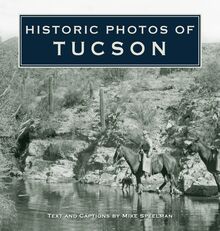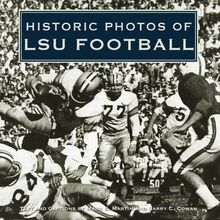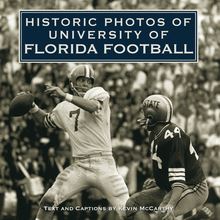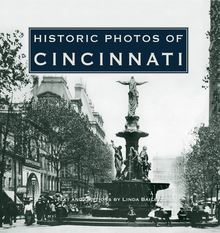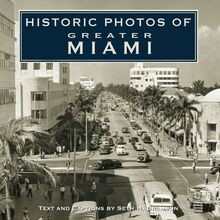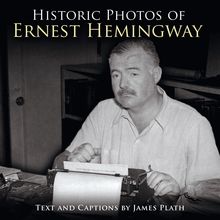Historic Photos of Tacoma , livre ebook
196
pages
English
Ebooks
2007
Vous pourrez modifier la taille du texte de cet ouvrage
Obtenez un accès à la bibliothèque pour le consulter en ligne En savoir plus
Découvre YouScribe en t'inscrivant gratuitement
Découvre YouScribe en t'inscrivant gratuitement
196
pages
English
Ebooks
2007
Vous pourrez modifier la taille du texte de cet ouvrage
Obtenez un accès à la bibliothèque pour le consulter en ligne En savoir plus
Publié par
Date de parution
01 avril 2007
Nombre de lectures
0
EAN13
9781618586865
Langue
English
Poids de l'ouvrage
38 Mo
Publié par
Date de parution
01 avril 2007
Nombre de lectures
0
EAN13
9781618586865
Langue
English
Poids de l'ouvrage
38 Mo
HISTORIC PHOTOS OF
TACOMA
T EXT AND C APTIONS BY N ICK P ETERS
Tacoma as it appeared on one early October day in 1969.
HISTORIC PHOTOS OF
TACOMA
Turner Publishing Company
200 4th Avenue North Suite 950
Nashville, Tennessee 37219
(615) 255-2665
www.turnerpublishing.com
Historic Photos of Tacoma
Copyright 2007 Turner Publishing Company
All rights reserved.
This book or any part thereof may not be reproduced or transmitted in any form or by any means, electronic or mechanical, including photocopying, recording, or by any information storage and retrieval system, without permission in writing from the publisher.
Library of Congress Control Number: 2007923664
ISBN-13: 978-1-59652-334-0
ISBN: 1-59652-334-4
Printed in China
09 10 11 12 13 14 15-0 9 8 7 6 5 4
C ONTENTS
A CKNOWLEDGMENTS
P REFACE
F RONTIER B OOM T OWN (1870 S -1899)
W ATCH T ACOMA G ROW (1900-1919)
A C ITY C OME OF A GE (1920-1939)
T HE W AR E RA TO R ECENT T IMES (1940-1969)
N OTES ON THE P HOTOGRAPHS
Centennial Queen Sally Hagen waves graciously to the large audience at the historical pageant By These Waters on July 2, 1969. She is a passenger in a horse-drawn carriage gliding past costumed performers. The queen, chosen a few days earlier along with a court of six princesses, would participate in many activities associated with the Centennial celebration.
A CKNOWLEDGMENTS
This volume, Historic Photos of Tacoma , is the result of the cooperation and efforts of many individuals and organizations. It is with great thanks that we acknowledge the valuable contribution of the following for their generous support:
The Library of Congress
The Tacoma Public Library
University of Washington Libraries
We would also like to thank our writer, Nick Peters, for valuable contributions and assistance in making this work possible.
-------
The goal in publishing this work is to provide broader access to a set of extraordinary photographs. The aim is to inspire, provide perspective, and evoke insight that might assist officials and citizens, who together are responsible for determining Tacoma s future. In addition, the book seeks to preserve the past with respect and reverence.
With the exception of touching up imperfections accruing with the passage of time and cropping where necessary, no changes have been made. The focus and clarity of many images is limited to the technology of the day and the skill of the photographer who captured them.
We encourage readers to reflect as they explore Tacoma, stroll along its streets, or wander its neighborhoods. It is the publisher s hope that in making use of this work, longtime residents will learn something new and that new residents will gain a perspective on where Tacoma has been, so that each can contribute to its future.
- Todd Bottorff, Publisher
P REFACE
Eureka! I found it! shouted Job Carr, a twice-wounded Civil War veteran, on Christmas Day in 1864 when he first landed at Commencement Bay. Thus begins the story of Tacoma, named by developer Morton McCarver for Mount Rainier 58 miles away-early known as Mount Tacoma, after tacobet , the word of the indigenous Puyallup for mother of waters.
Tacoma was supposed to be the grandest city on Puget Sound. Both Seattle and Tacoma, thirty miles apart, have deep natural ports and were pretty much equal in their assets and their liabilities. Tacoma even enjoyed favor for a while, in 1873 bagging the first railroad terminus on Puget Sound. In 1887, George Francis Train, a promoter and journalist from New York, anointed Tacoma the City of Destiny, heralding the arrival of the Northern Pacific at the new terminus. By the turn of the century, Tacoma was indeed a thriving and exciting place. Not to be outdone, however, the stalwart entrepreneurs who settled Seattle were a powerful force to be reckoned with. They rolled up their sleeves in a bid to outdistance their sibling.
Cities, composed of citizens, are flawed, and Tacoma was no exception. Frederick Law Olmstead, who designed Central Park in New York City, Golden Gate Park in San Francisco, and Volunteer Park in Seattle, also designed an avant-garde plan for the entire city of Tacoma in 1876, but his visionary ideas were dismissed. In 1885, city officials dealt with economic issues by rounding up minority residents and putting them on a train for Portland, Oregon. The Tacoma Method of handling the races was denounced nationally and locally.
In 1900, after the Weyerhaeuser company exhausted the timber around Minneapolis, its offices moved to Tacoma, and soon Tacoma was famous as the lumber capital of the world. The City of Destiny also became the capital of doors. Wooden doors made in Tacoma opened and closed in buildings, offices, and homes worldwide.
Tacoma has always been recognized as a city of beautiful homes and impressive estates. Ambrose Russell, a talented architect from Scotland and graduate of the Ecole des Beaux Arts in Paris, designed many of the city s regal addresses. The Tacoma Country Club, founded in 1893, is the second-oldest country club in the nation. (Only Brookline, Massachusetts, founded in 1887, is older.) The city also boasts one of the largest parks in the country, 650 acres of still mostly wilderness on the shores of Puget Sound. Point Defiance Park includes Fort Nisqually (built on the Nisqually River in 1832 and moved into the park in 1934) and a fine zoo that features an aquarium with a trained whale, an aviary with exotic birds from around the world, a snake house, and a monkey house.
Famous Americans who began life in Tacoma include singer and actor Bing Crosby and the cartoonist Gary Larson.
Tacoma is home to three impressive universities: the University of Puget Sound, Pacific Lutheran University, and, since 1990, the University of Washington Tacoma. The latter sits on 46 acres in downtown Tacoma and comprises rehabilitated turn-of-the-century warehouses and imaginative new buildings. The American Institute of Architects has given the university numerous awards. Tacomans delight in Johnny s Ocean Foods, an unrivaled retail and wholesale operation. Another favorite is the Antique Sandwich Company. The owners, sisters-in-law from Seattle, roast their own turkey for sandwiches and make delicious soups and pastries from scratch. Finally, Tacoma boasts a public library heavily relied on by residents.
Seattle is a larger city, but these days more and more Tacomans, when they think about the merits of their city, echo the words of old Job Carr: Eureka! I found it!
Tacoma in 1881 as viewed from what is now the 800 block of Fawcett Avenue. The two-story white house in the foreground fronts St. Helens Avenue. The stately white house to its right, built in 1879, was the home of Theodore Hosmer. The Northern Pacific Railroad land office is the large frame building to the right of the Hosmer House. The city s magnificent Broadway Theater was built on this site after the Tacoma Land Office moved.
F RONTIER B OOM T OWN
(1870 S -1899)
The Washington Territory, which included Oregon and parts of Idaho and Montana at various times, was created in 1853. That same year Nicholas DeLin built a sawmill at the head of Commencement Bay, but the Indian wars that broke out in 1855 caused the earliest settlers to evacuate their property and take refuge in Steilacoom and Olympia. When Job Carr, a Civil War veteran from Indiana, and developer Morton McCarver arrived a few years later, the settlement began to grow much more rapidly, especially after the Northern Pacific Railway chose Tacoma for its only terminus on Puget Sound.
In 1884 the glorious Tacoma Hotel, designed by Kim, Meade and White, renowned architects of New York, opened replete with $30,000 of furniture from Wanamakers. Until it was tragically destroyed by fire in 1935, the hotel was unrivaled in the Northwest and on the West Coast. In 1890 the Tacoma Theater, a red-brick Richardsonian structure (arguably the most beautiful public building in the city), elegantly graced Broadway at South 9th Street. It, too, succumbed to fire in 1966.
Annie Wright Seminary, founded by railroad tycoon Charles Wright in 1884, opened its doors with 94 female students. George Francis Train s Race-Around-the-World was seen as Tacoma s greatest publicity stunt up to that time. And Fay Fuller earned the distinction of being the first woman to climb Mount Rainier. (In 1870, Hazard Stevens, the first governor of the Washington Territory, and P. B. Van Trump had successfully climbed the mountain.) By the 1890s, the city s population had surpassed 36,000.
In 1892, Tacoma s intense and long-lasting love affair with international trade began with the arrival of the Phra Nana , the first steamer from the Orient.
Allen C. Mason, a dynamic businessman and a tireless Tacoma promoter, personally paid for ads in newspapers in other parts of the country that invited people to move to Tacoma. Soon he was a millionaire, but, like many others, he lost all of his property and capital in the national financial panic of 1893.
The young city swelled with pride and considerable relief as Pacific Avenue was paved in 1895.
Sporting topcoats and bowler hats, a large group of railroad men pose dockside at the plankway of a steamship, ca. 1880s.
Francis E. Cook published the Tacoma Herald inside this wooden structure from 1877 to 1880, shown here in 1878. The building was located at Nine Point on Rainier Street, a street that was vacated then obliterated in 1883.
Five men stand in front of Halstead House on Pacific Avenue ca. 1879-1885. One of the city s nicest hotels, it featured a covered walkway leading to the water closet behind the building.
Tacoma s Twenty-Seven on November 3, 1885. Fueled by racism and fear, the Committee of 27 led a mob that forced the Chinese population of Tacoma onto trains bound for Portland, Oregon. The homes of the Chinese were looted then burned to the ground. The Committee included Tacoma mayor, Jacob Robert We






